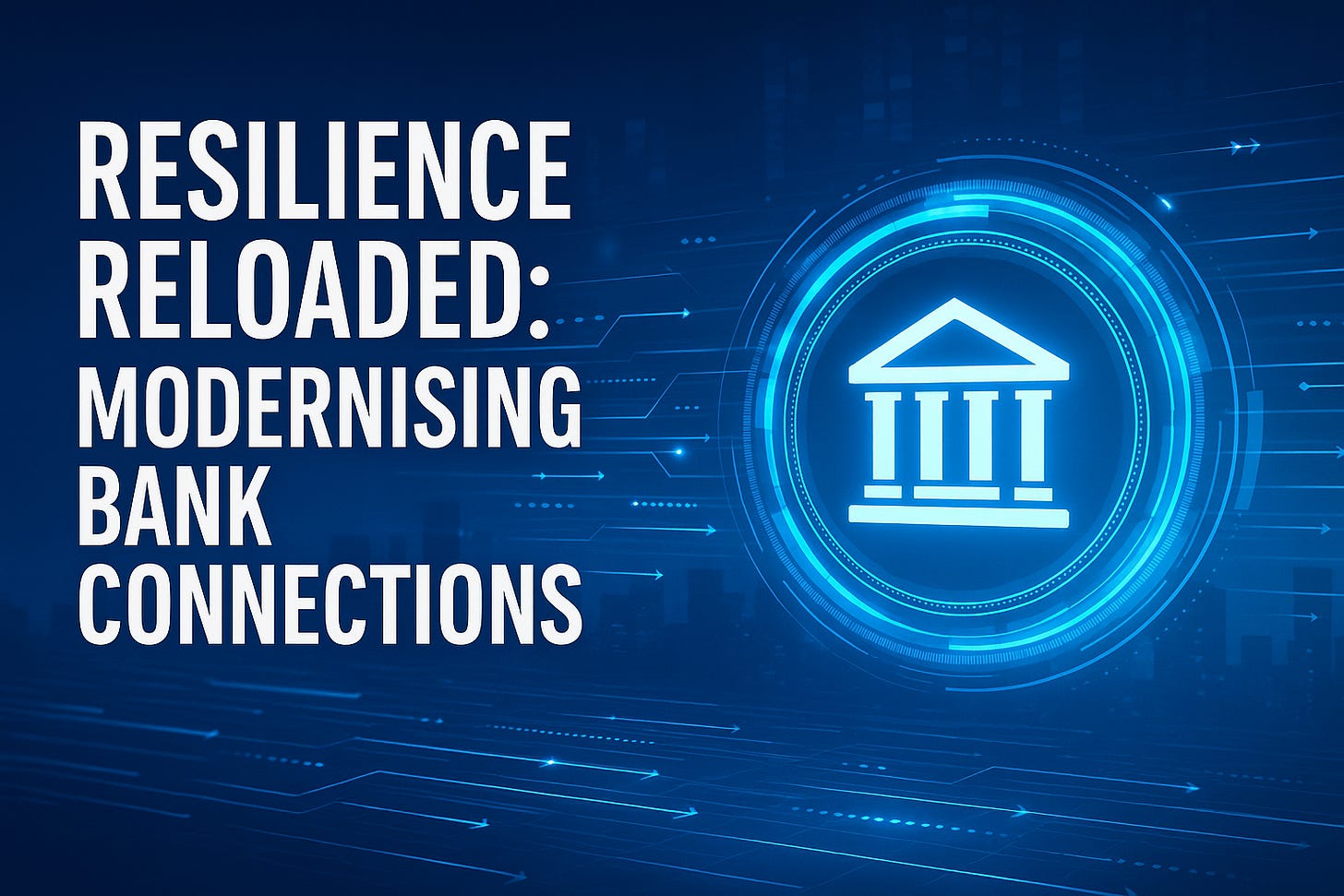Huge thanks to Zhenya Winter from Bottomline for allowing Payments:Unpacked to feature “Resilience Reloaded: Modernising Bank Connections” as a guest blog.
Resilience Reloaded: Modernising Bank Connections
In the wake of IT failures, such as those experienced by the faulty CrowdStrike update, operational resilience has become a crucial focus for professionals across various sectors, especially within the financial services sphere.
As financial institutions navigate increasing disruptions - from system outages to cyber threats - the necessity for robust bank and payments connectivity services is becoming paramount.
Additionally, at least 158 banking IT failure incidents – over 33 days’ worth of disruption in total – impacted the ability of millions of customers to access and use those services between January 2023 and February 2025, according to data published by the Treasury Committee in March 2025.
These services are not merely supplemental components of business continuity; they form the backbone that enables financial institutions to maintain functionality during crises, ultimately securing financial stability. With cross-departmental ramifications for heads of IT/technology, operations, treasury, payments, and risk management, the pressure to align is on.
The importance of operational resilience as a key requirement is being amplified and enforced by regulatory changes in the UK and Europe—namely, the UK’s Financial Conduct Authority’s Operational Resilience Mandate, which had a 31 March 2025 deadline, and the EU’s Digital Operational Resilience Act (DORA) framework deadline, which was in January 2025.
However, a recent poll by The Payments Association in October found that 50% of financial institutions in the UK were in progress to meet operational resilience regulations, 33% were fully compliant and confident, and a worrying 17% were still unsure where to begin.
For that 17%, a good place to start is by investing in the implementation of SaaS and replacing legacy infrastructure and systems. In fact, KPMG’s Payments Modernisation report in 2023 said that in the UK, the average investment in a payments modernisation programme was £27 million. Of those respondents, 58% cite the motivation as being able to keep up to date on regulatory changes because business continuity would be impossible otherwise.
Are You Ready for the Unexpected?
Operational resilience is defined as a financial institution’s ability to prevent, adapt, respond to, recover from, and learn from operational disruptions. These disruptions may arise from various sources, including external threats like cyberattacks or internal issues like system updates that inadvertently crash software, as seen recently with CrowdStrike.
While CrowdStrike’s incident was managed quickly, it underscores a broader point: every financial institution, even those seemingly fortified against disruptions, must question the resilience of payment processes. Failure to maintain continuous payment connectivity could lead to significant losses—both reputational and financial.
A straw poll of the audience of the recent Bottomline webinar, ‘Adopting a Robust Approach to Business Continuity’, found that the biggest concerns were related to reputational damage and making staff or supplier payments. Collecting money was the third most important concern.
Building Resilience
Financial institutions can fortify their operational resilience in payments by:
Utilising Diverse Payment Channels: Broadening the array of payment options available enhances resilience by providing fail-safes during system failures.
Investing in SaaS Platforms: Transitioning to unified API-enabled SaaS solutions enables continuous monitoring and rapid recovery mechanisms, allowing for a prompt response during operational disruptions. SaaS platforms also streamline compliance with evolving regulations, reducing the burden on in-house teams.
Prioritising Resilience
Integration of bank and payment connectivity services into a financial institution’s operational resilience strategy is indispensable in today’s interconnected and fast-paced business environment.
By preparing for the unexpected and investing in the right technologies for compliance and multilateral payment platforms, financial institutions can protect themselves from the immediate impacts of disruptions and build a foundation for sustainable operations and long-term stability.
Those prioritising operational resilience and having a clear and immediate plan of action will undoubtedly gain a competitive edge, ensuring they survive and thrive amid uncertainty.
Zhenya Winter
Huge thanks to Zhenya Winter from Bottomline for allowing Payments:Unpacked to feature “Resilience Reloaded: Modernising Bank Connections” as a guest blog.
Book a 1:1 strategic workshop with Bottomline.https://www.bottomline.com/contact






